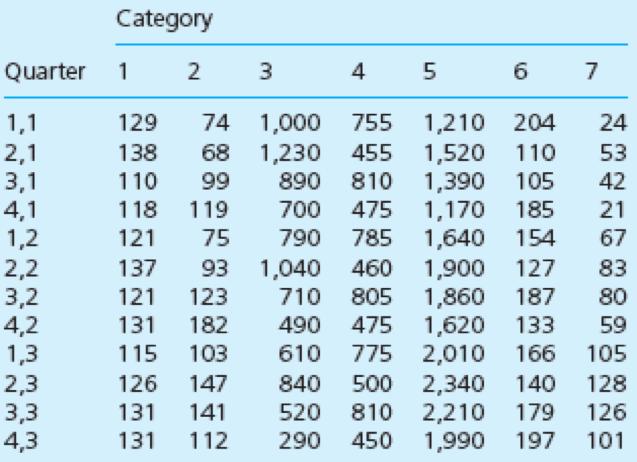Question
Maria Castigliani is head of the purchasing department of Ambrosiana Merceti, a medium-sized construction company. One morning she walked into the office and said, The
Maria Castigliani is head of the purchasing department of Ambrosiana Merceti, a medium-sized construction company. One morning she walked into the office and said, ‘The main problem in this office is lack of planning. I have read a few articles about planning, and it seems that forecasting is the key to an efficient business. We have never done any forecasting, but simply rely on experience to guess our future workload. I think we should start using exponential smoothing to do some forecasting. Then we can foresee problems and schedule our time more efficiently.’ Unfortunately, the purchasing department was having a busy time and nobody in the office had time to develop Maria’s ideas. A month later nothing had happened. Maria was not pleased and said that their current high workload was caused by lack of planning – and hence forecasting – and things would be much better if they organized their time more effectively. In particular, they could level their workload and would not be overwhelmed by periodic surges. To make some progress with the forecasting, Maria seconded Piotr Zemlinski, a management trainee, to work on some figures. Piotr examined their work, and divided it into seven categories, including searching for business, preparing estimates, submitting tenders, finding suppliers, and so on. For each of these categories he added the number of distinct tasks the office had completed in each quarter of the past three years. Collecting the data took six weeks, and Piotr summarized it in the following table. 
Now Piotr wants to forecast likely workload for the next two years. He knows a little about forecasting and feels that exponential smoothing may not be the answer. He is not sure that the data is accurate enough, or that the results will be reliable. He feels that it would be better to link the forecasts directly to planning, overall workload, and capacity. To help with this, he has converted the effort involved with different tasks into ‘standard work units’. After some discussion, he allocated the following number of work units to a typical task in each category of work. Category 1 2 work units Category 2 1.5 work units Category 3 1 work unit Category 4 0.7 work units Category 5 0.4 work units Category 6 3 work units Category 7 2.5 work units
Questions - What information has Piotr collected, and how useful is it?
What other information does he need? - How can Piotr forecast future workloads in the purchasing department?
How reliable are the results? Do they suggest any patterns of workload? -
What are the implications of Piotr’s work, and what should he do now?
Category Quarter 1 2 4 6 7 1,000 1,230 455 99 1,210 204 1,520 1,390 1,170 1,640 1,900 1,860 1,620 775 2,010 755 1,1 2,1 3,1 4,1 1,2 2,2 3,2 4,2 1,3 2,3 3,3 4,3 129 74 24 110 105 138 68 53 110 890 810 42 118 119 700 475 185 21 121 75 790 785 154 67 137 93 1,040 460 127 83 121 123 710 805 187 80 131 182 490 475 133 59 115 103 610 166 105 126 147 840 500 2,340 2,210 1,990 140 128 131 141 520 810 179 126 131 112 290 450 197 101
Step by Step Solution
3.55 Rating (162 Votes )
There are 3 Steps involved in it
Step: 1
ANSWER 1 Piotrcollected information about searching for business prepa...
Get Instant Access to Expert-Tailored Solutions
See step-by-step solutions with expert insights and AI powered tools for academic success
Step: 2

Step: 3

Ace Your Homework with AI
Get the answers you need in no time with our AI-driven, step-by-step assistance
Get Started


